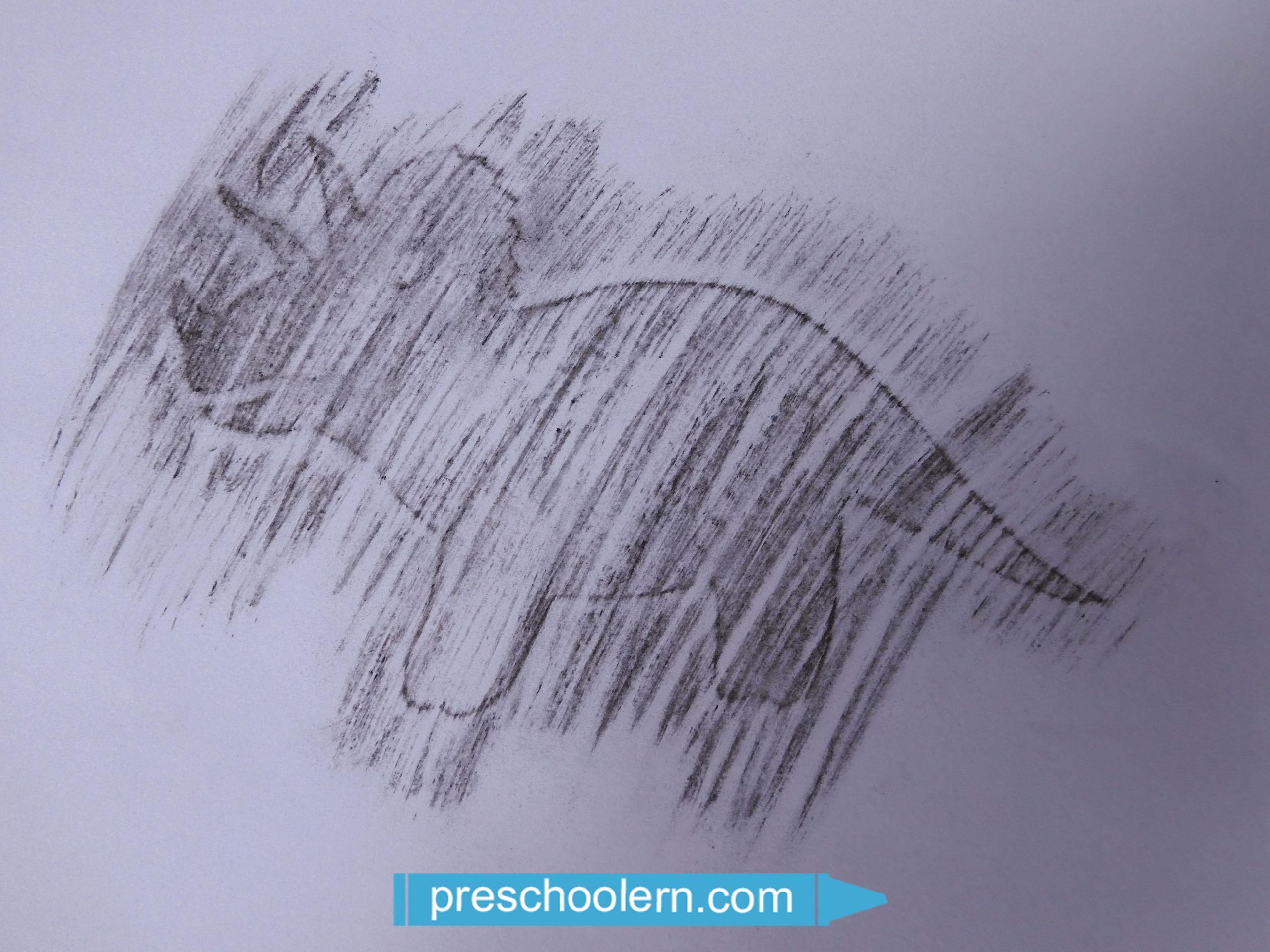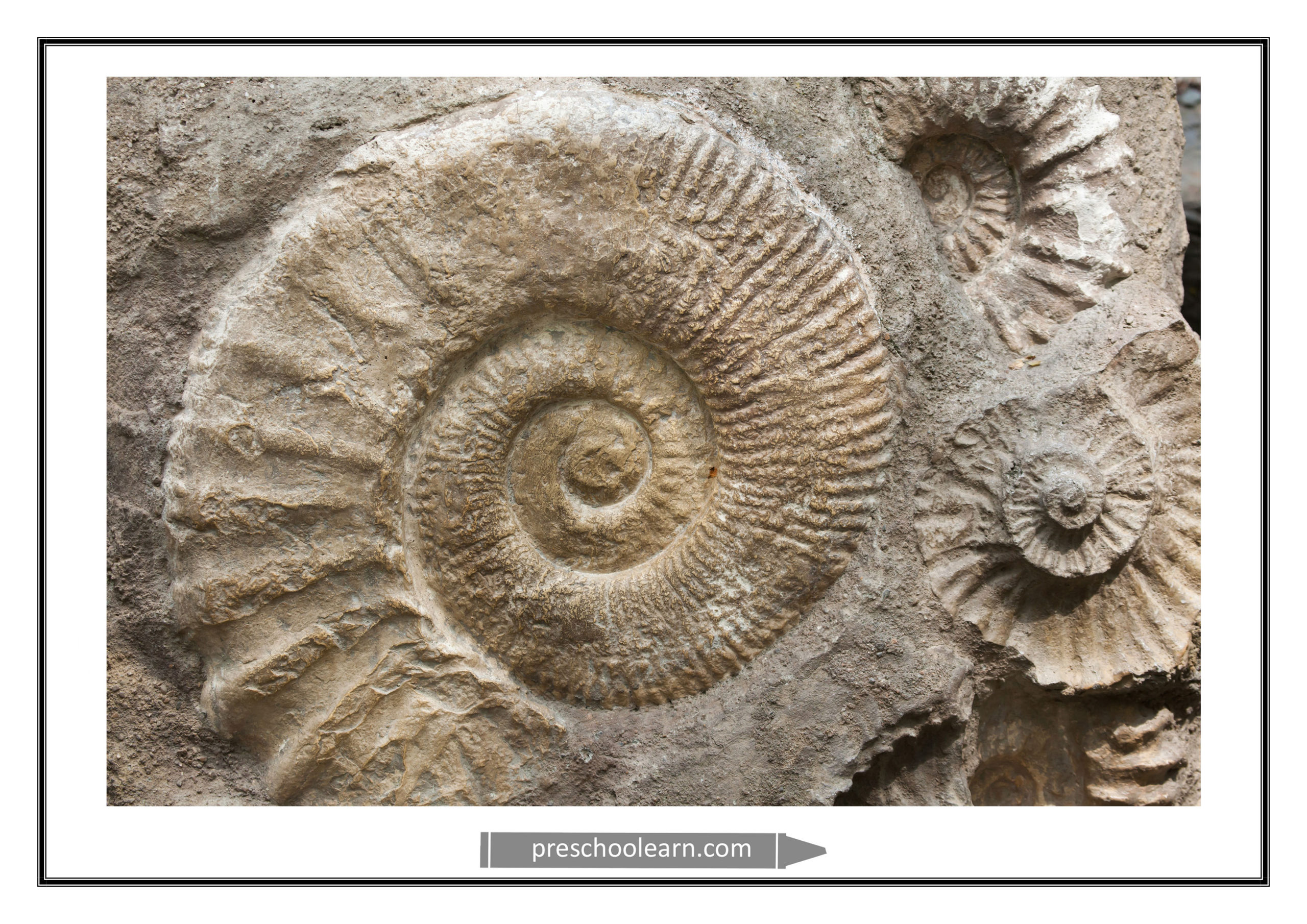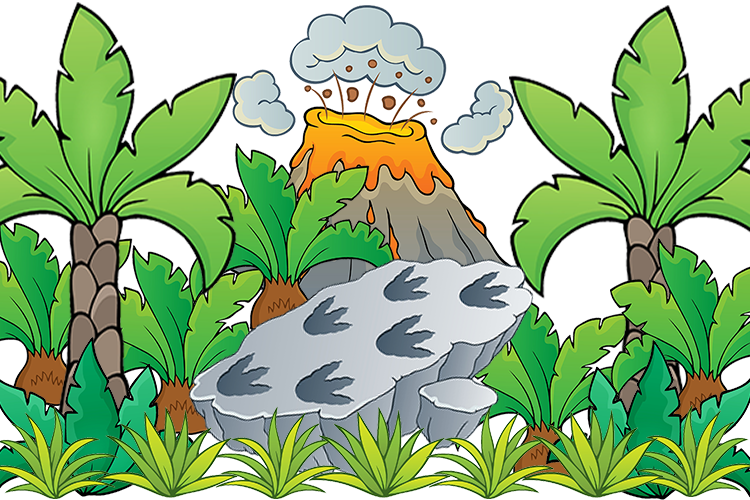Kindergarteners will talk about the prehistoric forest. They will get to know how carbon was made. Kids also will make their fossils and pictures painted with carbon.
Materials:
a song entitled ‘Hello, how are you today?’, chairs, carbon, A4 sheets, figurines of dinosaurs from the technical block, a song entitled ’10 little dinosaurs’, fossils/ picture cards with them, tambourine, plasticine/modeling clay/salt dough/gypsum, figurines of dinosaurs, leaves of plants, drum.
Activity description:
* Teacher, before the class, keeping it a secret from children (for example during the breakfast), places on the tables white A4 sheets with figurines of dinosaurs underneath them – one for each child.
1. ‘Hello, how are you today?’ – greeting children with the song – teacher with children sing the song and show the correct gestures. Repeat it twice.
Hello, hello, how are you today? (wave to each other)
I am happy, happy, happy (smile to each other)
Hello, hello, how are you today? (wave to each other)
I am sad, sad, sad (make a sad face)
Hello, hello, how are you today? (wave to each other)
I am hungry, I’m hungry today (imitate the mouth of a shark by hands)
2. ‘In prehistoric forest’ – chatting – teacher asks children ‘Where did dinosaurs live?’, ‘Did they have houses?’, ‘Did they have something like doghouse?’. After their answers, teacher sums up information about the prehistoric forest and informs about the origin of carbon..
Once upon a time on the Earth, there was a big, green forest. There are large trees, ferns and field horsetail. They were very large, much larger than plants from the forests now. Trees and other plants grew and grew until they fell over from old age. They were broken by strong winds or lightning during storms sometimes. Sometimes they were flooded by heavy rains. The water from rain mixed with the ground and the mud was formed. It covered the broken trees with an increasingly thicker layer. New plants grew on the new soil and those that lay underground without air, hardened and turned into harder and harder lumps. They turned to carbon. Today you can see on a piece of them traces of ancient trees that grew on Earth without humans. Now the carbon is extracted from the ground in mines.
3. ‘Climbing a tall tree’ – movement activity – children set themselves chairs against the wall. Next, the teacher learns them safe climb on and off the chair. They move on the carpet. When the teacher says: ‘Let’s go on a tree!’ – children have to get into their chairs and climb it. When she says: ‘Let’s go down to the ground!‘ – children have to climb off and move on the carpet. We repeat it 5-6 times.
4. ‘Dinosaurs painted by carbon’ – artwork – teacher explains to children how they have to make an artwork (gently rub the sheet with the flat carbon). Next, teacher asks children to go to the tables with art supplies for this artwork. After that, they clean up, sit in a circle on the carpet and present their artworks. They try to guess the name of the dinosaur from their sheet.

5. ‘Walk through a prehistoric forest’ – movement activity – children move on the carpet to a song entitled ’10 little dinosaurs’. When the music stops, teacher gives them instructions e.g. ‘jump over the log/try to break off the leaves from a tall tree/jump on pebbles across the river’ etc. Repeat it 5-6 times.
6. ‘What are fossils?’ – didactic activity – teacher places on the carpet the fossils/picture cards with them and asks children do they know what it is. After their answers, he/she sums them up:
Fossils are the remains of organisms, preserved in the rocks and trace their life activities for example trails, traces of drilling, feeding and creeping. Imprints and remains of shoots, trunks, leaves, seeds and plant roots are plant fossils. One of the best-known animal fossils is ammonites – a group of animals with spirals, flat shells, often confused with snails.
More information about the fossils are available here.
7. ‘Fossils’ – movement activity – children move in the kindergarten room to the rhythm of a tambourine. During a break, they freeze. Repeat it 5-6 times.
8. ‘Our fossils’ – making fossils – teacher explains to children how to make fossils (form the ball with salt dough/plasticine/modeling clay/gypsum, crush it with hand, press the leaf/figurine, put it with hand, gently remove the leaf/figurine). Next, teacher asks children to go to the tables with art supplies for this work. After that, children clean up, sit on the carpet in a circle and present their works.
9. ‘Find fossil’ – movement activity – children move on the carpet to the rhythm of a drum. During a break, they walk on all fours – ‘find fossils’. Repeat it 5-6 times.
* For tomorrow, freeze colored water with dinosaur figures in ballons. Detailed instructions are available here.
Attachments:
Figurines of dinosaurs for the ‘Dinosaurs painted by carbon’ activity
Picture cards for the ‘What are fossils?’ activity

Pages used:
- https://www.youtube.com/watch?v=teMU8dHLqSI – a song entitled ‘Hello, how are you today?’
- https://easyscienceforkids.com/all-about-fossils/ – information about the fossils
- https://ekodziecko.com/skamienialosci-z-masy-solnej – fossils with salt dough
- https://www.bbcgoodfood.com/howto/guide/how-make-salt-dough-recipe – a recipe for the salt dough
- https://supersimple.com/song/ten-little-dinosaurs/ – a song entitled ‘10 little dinosaurs’ + picture cards
- https://supersimple.com/article/frozen-dinosaur-ice-eggs/ – step guide to making a frozen dinosaur eggs


